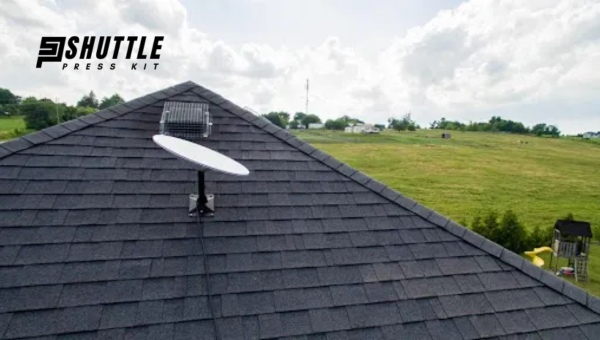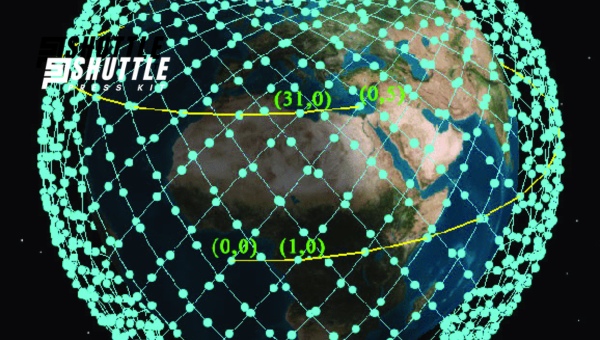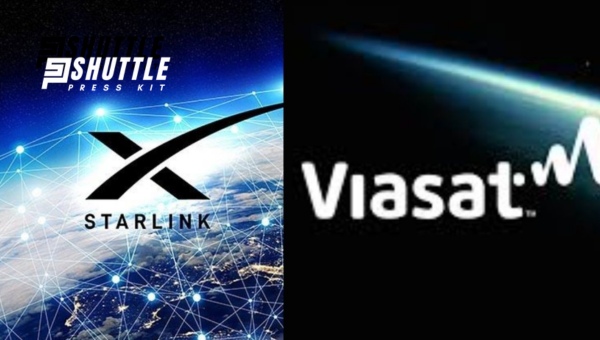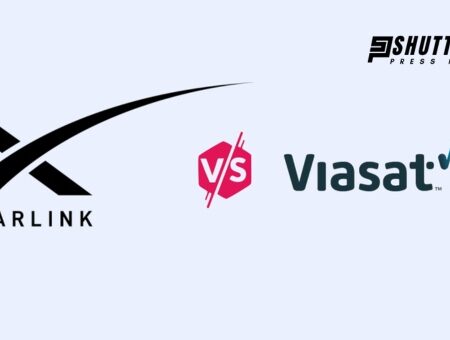When it comes to choosing satellite internet, the big debate often boils down to Starlink vs Viasat. With more people moving to areas where traditional broadband can’t reach, knowing which satellite service reigns supreme is crucial.
Maybe you’re tired of slow loading times, or perhaps you’ve heard your neighbors chat about those new dishes popping up like mushrooms after the rain – that’s right, I’m talking about Starlink antennas. But before you commit, let’s delve into what really sets these two providers apart.
What really happens when we pit Starlink against Viasat in a head-to-head clash? It turns out one of these might catapult your internet experience into the stratosphere! While both offer unique features and benefits that may sway your decision, there seems to be a leader for those who crave speed and cutting-edge tech.
Now let’s buckle up and blast off through this space race as we compare their speeds, reliability, and costs – pretty much everything under the sun (or rather – satellites)!
Understanding Starlink
Starlink is a revolutionary internet service provider that uses cutting-edge satellite technology to deliver high-speed internet connectivity.

The service, offered by SpaceX, aims to provide reliable and affordable broadband services globally, even in remote areas where conventional internet access may not be available. Starlink operates with a distinct model offering several different plans catering to various needs.
Plans and Pricing
| Plan Type | Price Range | Speed | Initial Equipment Cost | Data Details |
|---|---|---|---|---|
| Basic Plan | $120 | 25-220 Mbps | $599 | Unlimited (no specific allotment) |
| Enhanced Plan | $140 to $500 | Same as Basic | $2,500 | First 40GB to 2TB, then unlimited |
| On-the-Go Plan | $150 to $200 | Same as Basic | $599 | Unlimited (similar to Basic) |
| Priority Mobile | $250 to $5,000 | Same as Basic | $2,500 | First 50GB to 5TB, then unlimited |
How Does Starlink Work?
The innovative approach adopted by Starlink leverages thousands of compact satellites that orbit closer to the Earth compared to traditional satellites used for internet services. These “low-Earth orbit” (LEO) satellites create a comprehensive network to deliver internet coverage worldwide.
A Starlink satellite can communicate with its peers, resulting in faster communication speeds and minimal lag time for data transmission compared to geostationary satellites. Despite the high-tech involved, the working principle is quite straightforward: You send an internet request; this request travels to your elected Starlink dish which then sends it up to the nearest satellite in orbit.
The signal continues hopping from one satellite to another until it reaches a ground station connected to the servers hosting your desired web page.
Equipment Needed for Starlink
To use the Starlink service, several specific pieces of hardware are needed:
- Satellite Dish: A compact, user-friendly satellite dish, commonly referred to as ‘Dishy’, is needed to connect with Starlink’s satellites.
- Modem: A modem is required to convert the signals received from Dishy into a format that can be used by digital devices.
- Router: This is used to distribute the internet connection within your home or office.
The trio constitutes a standard kit provided by SpaceX and nicely packaged in what they call ‘Starlink Kit.’ The upfront cost primarily goes towards equipment acquisition.
Starlink App Functionality
The Starlink app greatly aids and simplifies set-up procedures besides managing your connection thereafter. As soon as you point Dishy towards the sky using the app’s built-in augmented reality function–it shows you where satellites are in relation to their current location.
You get cues sans guesswork on ideal placement spots avoiding obstructions like trees/buildings if any obstructing line-of-sight between Dishy and satellites thus helping maximize reception quality.
Usage information including speed/data usage stats can also be tracked through this functional app, handy for monitoring your chosen plan’s data limit. It also provides support resources in the form of guides and troubleshooting tips. Starlink makes it user-friendly and less daunting to kickstart internet use from outer space.
Also Read: Starlink Mounting Options – Your Ultimate Installation Guide
Discovering Viasat
Viasat is a service that gives you the internet from space. It sends internet to your house without needing wires on the ground like most other internet services do.

This is great for places where it’s hard to get good internet. With Viasat, you can choose how fast you want your internet and how much you want to spend each month.
Plans and Pricing Options with Viasat
| Plan | Price | Features |
|---|---|---|
| Viasat Unleashed | $99.99—$119.99/mo. | Unlimited high-speed data, 25—150Mbps |
Viasat has different plans so that everyone can find one they like. The price changes based on how fast you want your internet to be. For example, their Viasat Unleashed plan costs between $99.99—$119.99 every month and gives you lots of fast data to use without limits.
Choosing a plan means thinking about what you do online and picking a speed that matches that. If all you do is check emails, a slower speed might be okay but if you watch movies or play games online, faster speeds from plans like the Unleashed might be better.
The Mechanism Behind Viasat’s Service
Viasat uses satellites in space to bring the internet to your home, which is pretty cool when you think about it! These satellites are way up high in the sky, moving around the Earth sending signals back and forth between your dish at home and these satellites.
This kind of technology makes it possible for people living in remote areas or places with no phone lines or cables underground to still have good access to the internet for everything they need or enjoy doing online.
Equipment Needed for Viasat
The proper setup is essential for accessing the company’s broadband services, particularly in rural or underserved areas where traditional internet infrastructure might be lacking. Here are the key components needed to get connected with Viasat:
- Satellite Dish: A crucial part of your Viasat installation is the satellite dish. This dish is installed outside your home and positioned to have a clear line of sight to Viasat’s satellites in space. It receives signals from these satellites, enabling your internet connection.
- Modem: A specialized modem provided by Viasat connects to the satellite dish via a coaxial cable. This modem converts received signals into usable internet connectivity for your home network.
- Wi-Fi Router: While some Viasat modems come with built-in Wi-Fi capabilities, you may need an external router depending on your specific service package and setup. This router enables wireless access throughout your home, allowing multiple devices to connect to the internet simultaneously.
These components are professionally installed by a certified Viasat technician to ensure that everything functions correctly and provides you with reliable high-speed internet access.
Installing Your Viasat Equipment
Getting the equipment set up is an important step but don’t worry; it’s not something you have to do alone. When you sign up for Viasat, they’ll send out a professional technician who knows exactly how to install everything correctly.
First, they find the best spot for your satellite dish – somewhere it can get clear signals from space without blockages like trees or buildings.
Then, this dish gets securely attached and connected by cables running into your house to where your modem will live. The technician makes sure everything works perfectly – checking signal strengths and making sure all necessary settings are just right before wrapping up.
The process of installing Viasat might sound complicated, but with their experts on hand, it really isn’t something you need to worry about at all!
Also Read: Does Starlink Work Well In Bad Weather? Unveiled Truth!
Comparison Between Starlink vs Viasat
When we look at internet services from space, Starlink and Viasat are two big names. People might wonder which one is better.

We will compare them in categories like speed, how long it takes to send data (latency), what kind of data plans they have, how much they cost every month and the technology they use.
Comparing Internet Speeds
When comparing the internet speeds between SpaceX’s Starlink and Viasat, there are distinct differences to note, primarily due to their technological infrastructure and deployment strategies.
Starlink harnesses a constellation of low Earth orbit (LEO) satellites, enabling it to provide services with markedly reduced latency and higher speeds. Target speeds for Starlink users hover around 100 Mbps to 200 Mbps, with ambitions to reach even faster rates as their satellite network continues to expand.
On the other hand, Viasat operates through geostationary (GEO) satellites positioned much farther from Earth. This positioning inherently adds a delay due to the longer distance signals must travel compared to LEO satellites.
Consequently, while Viasat offers plans with speeds up to 100 Mbps, which is competitive on paper, the user experience might be impacted by higher latency issues compared to Starlink. This makes activities such as real-time gaming or video conferencing less fluid under certain circumstances.
Additionally, weather conditions can influence the performance of both services but may more significantly affect Viasat due to its reliance on fewer, farther-stationed satellites.
Comparing Latency: Starlink vs. Viasat
Starlink often showcases lower latency figures when compared to Viasat, making it a preferred choice for tasks requiring real-time interaction. Users of Starlink can expect latency below 40 milliseconds (ms), aiding in smoother online gaming and video conferencing. This performance is attributed to Starlink’s advanced satellite infrastructure.
In contrast, Viasat’s latency tends to be higher, occasionally surpassing 600 ms, due to its reliance on geostationary satellites positioned much farther from Earth. While this may not significantly impact activities such as web browsing or streaming, it poses challenges for real-time applications that rely on swift data transmission.
Monthly Subscription Cost Analysis: Starlink vs. Viasat
Starlink’s basic service tier is typically priced higher than Viasat’s entry-level offerings, reflecting its faster speeds and lower latency. As a result, users looking for high-performance satellite internet, particularly those in remote areas without access to traditional broadband, might find Starlink’s pricing justified for its advanced connectivity solutions.
The premium reflects the technological edge and infrastructure investment that Starlink brings, aiming to deliver near-global coverage at competitive speeds.
Viasat caters to a broad spectrum of users with its tiered pricing model, accommodating those with more modest internet needs at a lower cost entry point. This makes Viasat an attractive option for users prioritizing budget over cutting-edge speed or latency performance.
However, as usage increases or demands for higher bandwidth grow, Viasat subscribers might encounter plan limits necessitating upgrades that can lessen the price difference between the two services.
Also Read: Flat High-Performance Dish Unveils Powerful Starlink
FAQs
Is Starlink better than Viasat?
Yes and No. It depends on various factors such as location, average internet uses, and budget. If speed and latency are essential to you, then Starlink might be your best option. Still, if you’re looking for affordability, then Viasat may suit you more.
Is Starlink better than other internet providers?
Starlink seems to have an edge over other satellite services due to its faster speeds and lower latency than most competitors. However, it might not match up effectively against landline-based services like fiber-optic or Cable.
Who is Starlink’s competitor?
Viasat is one of the main competitors of Starlink in the market of satellite internet providers. Other competitors include HughesNet and some limited rural broadband service operators.
Who has the fastest satellite internet?
Currently, SpaceX’s Starlink offers some of the fastest speeds in satellite internet with its phased-array technology delivering impressive median speeds that often exceed conventional providers.
Also Read: What is Starlink Priority Plan? High-Speed Heaven for Users
Conclusion
In the grand debate of Starlink vs Viasat, there are unique aspects to both. But it boils down to your internet usage needs. If speed and low latency are your top priorities, Starlink holds an edge over Viasat.
However, Viasat’s diverse plans and contract options might be ideal for individual users with varying internet usage patterns. Regardless of the decision you make, ensure that it aligns with your specific requirements.
